Instruction
Understanding the mechanics of the golf swing: Club face rotation and the end-all slice fix
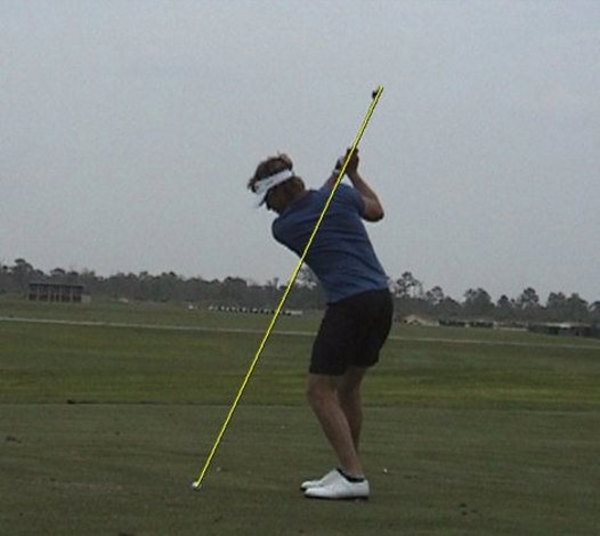
WHAT IS SQUARE?
Normally, the club face must be square, at a right angle to the direction the club head is traveling during impact for a TRUE straight ball flight. It has been proven by science several times that the orbit of the club head on the approach to the ball in the impact zone is essentially PLANAR. This simply means that the club head, the essence of which is its C.G. (center of gravity) or “sweetspot,” swings ON or within a plane, which is a flat surface.
Picture a sheet of plywood. A square club face to this plane would see the leading edge of the club face vertical to the face of the plywood. Since the club head swings on this plane, then at any time during the swing, the alignment of the club face to the plane is the SAME as the alignment of the club face to the direction the club head is travelling, its arc.
You may have seen the club face referenced many times to so-called “square” at various points in the swing by teaching pros, most notably at the top of the backswing. But just a casual examination of the mechanics of effective swings reveals that the club face does NOT stay square, in the literal sense, to the plane of the swing throughout. In golf instruction, what has historically been referred to as “square” at the top of the swing is in fact a club face alignment that is not square at all, but rather PARALLEL to the swing plane, which is 90 degrees “open,” rotated rightward.
At address the club face is normally aligned vertically, square to the swing plane. The plane used as a model here is a sheet of plywood, propped-up.
The “traditional square” club face at the top of the backswing sees the leading edge of the club face essentially PARALLEL to the swing plane, as shown, 90 degrees rotated from vertical
PGA TOUR winner, Aaron Baddely, exhibits very nearly the “traditional square” club face position at the top of the backswing
It would be incredibly difficult for the human golfer to keep the club face square to the planar arc of the club head during a full swing, and no winning tour pro has ever come close to doing so. The reason why is that the human shoulder joint and wrist, unlike, say the joints of a folding ruler, are fully capable of rotating. In fact, they beg to rotate during the swing. So then, not only does the club rotate or swing in a circular arc on the face of our inclined swing plane, but the club also rotates around itself as the upper arm rotates at the ball-and-socket shoulder joint, and the left forearm rotates the wrist about its own axis. And since the club is attached at the hand, it is these actions ALONE which rotate the club face, relative to the plane of the swing. For the record, rotating your body does NOT rotate the club around itself, only around YOU.
Now is this rotation of the club face around itself a good thing? You may ask yourself if this opening and closing of the club face is more difficult to time correctly. Wouldn’t it be simpler mechanically to keep the face of the club square to the plane throughout the swing, even as the club is hinged up to as much as a 90 degree angle from the left arm at the hands on the plane near the end of the backswing? While it is true that this would involve fewer moving parts, and also guarantee a square club face at impact, human anatomy dictates that club face rotation, not simply around the human, but also around the club head itself, is a complication that we, as human golfers, are compelled to produce by design.
And so, since alignment of the club face to the arc of the club head, which lies within an inclined plane, cannot remain at right angles during the entire swing, then “proper,” albeit not “square,” club-face alignments may well be those that the human anatomy produces most naturally, but should ABOVE ALL ELSE PROMOTE THE CLUB FACE TO ROTATE BACK TO THE INTENDED ALIGNMENT TO THE SWING PLANE AT IMPACT.
Passive Wrists
In case you didn’t know, the wrists can be 100 percent PASSIVE during the swing, their bending and rotating allowed to happen freely in response to the force of active movements during the swing, such as swinging the left arm from its joint and rotating the body about the spine. And so if passive wrists allow the club face to rotate to the “traditional square” position at the top of the backswing, so that the leading edge of the club face is parallel to the left arm and thus to the plane of the swing, you need not worry about any perceived responsibility you may think that you have to ACTIVELY rotate the wrists in the downswing to close the club face back to square for impact. After all, if the wrists were purely passive, yet they rotated during the backswing, why shouldn’t these same passive wrists make what Jack Nicklaus described in his book, “Golf My Way,” as equal and “reciprocating” movements in the forward swing to return the club face properly back to the ball at impact? Indeed, in Ben Hogan’s book “5 Lessons,” he wrote: “I don’t give as much as a passing thought to how the face of my club will contact the ball”, and “consciously trying to control the face of the club at impact is folly.”
Grip Pressure
Even if the wrists are allowed to hinge FREELY, not actively, they will respond differently to “clamping” or grip pressure. And since the wrists bend and roll more easily when grip pressure is lighter, promoting both a square face at impact as well as more club-head speed, be sure that you are holding the handle of the club LIGHTLY. “How lightly?” you may fairly ask. I instruct my students that, on a scale of 1 to 10, with 10 being squeezing your hardest, then you want your normal grip pressure to be in the 3 to 5 range.
The End-All Slice Fix
In my experience teaching and club-fitting, well over half of all golfers suffer chronically from a club face that is open to the plane of the swing at impact, producing a ball flight which curves from left to right. Assuming that the club face was aligned squarely at the start, then the club face has opened more in the backswing than it has closed in the forward swing before impact. An absolutely magic fix is to reduce the amount of clockwise rotation of the left wrist during the backswing. Essentially, what we are trying to achieve here is to match the degree of opening club-face rotation during the backswing, with the closing rotation that presently exists in the downswing. This is most easily achieved by the player by intending to actively rotate the left wrist counter-clockwise during the backswing as you would twist a screwdriver “lefty loosey.” But as we say in golf instruction, “feel and real are not the same,” as the effect of this intention is to simply reduce or even eliminate entirely the clockwise rotation of the left wrist during the backswing.
Be advised that this active wrist action will change the way the wrists move to hinge the club within the plane of the swing and just like any swing change, will feel “different” at first. Gripping so that the wrists are effectively turned well-rightward of the club face at address, ideally 30 degrees, then the intended counter-clockwise rotation of the left wrist should allow the wrist to form a straight, flat line with the back of the forearm at the top of the backswing. Any “kinking” of the back of the left hand away from the palm would indicate excessive independent wrist rotation, the BAD kind for the slicer, the kind that OPENS the club face, during the backswing. This “reverse-twist” of the wrists is not new in golf instruction. PGA professional Joe Dante advised a “backward break” of the left wrist in the take-away, the intended result being that “the club face has been kept square,” in his 1962 book, “Four Magic Moves to Winning Golf.” But the definitive examination of wrist/club-face rotation is found in the bio-mechanical study presented in the 1968 seminal golf research book, “Search for the Perfect Swing.”
The hands should be placed on the handle rotated approximately 30 degrees rightward of vertical, so that the creases between the thumb and forefinger point to the right shoulder
At the top of the backswing, the left wrist should be flat, not bent, which in conjunction with the advised grip style, results in a club face position which is close to parallel to the ground
A Swing Guide
The “Swingyde” is an essential training aid that can be used to teach limiting club-face rotation during the backswing. It is recommended by its manufacturer to align the “arm” of the Swingyde parallel to the club face. Then, for the “cup” at the end of the bar to sit on the left forearm at the top of the backswing, as indicated, the club would have to rotate 90 degrees around its own axis from its starting position. This will allow the club face to rotate from perpendicular to the plane at the start, to lie neatly within or parallel to the plane at the top, the classic “square.” But, what if we intentionally align the arm bar rotated on the handle to the right of the club face, say 30 degrees? Well, now if the arm cup again sits on the forearm at the top of the backswing, then the opening rotation of the club face has been effectively reduced by 30 degrees. The effect for the slicer is profound.
How to do it
Set the arm bar rotated 30 degrees rightward of the club face on the handle of the club. How much is 30 degrees, you ask? Simple, if you were to look at the face of a clock, each minute mark is 6 degrees. So 30 degrees will have you at 1 o’clock. Apply the “lefty loosey” twist with the wrists, as needed, to allow the left forearm to sit in the cup at the top of the backswing. This will effectively eliminate the opening rotation of the left wrist, independent from the upper arm, thereby eliminating the need for additional closing rotation in the forward swing to return the club face square to the plane at impact. No more slice!
The End-ALL Slice position for the Swingyde. The club face is vertical at 12 o’clock, while the arm bar is rotated rightward to 1 o’clock. This position is somewhat extreme, and should tame even the biggest slice. You may however, begin with the bar at a less rightward position from vertical, say 12:30, working your way up to 1 o’clock, as needed, until the rightward curvature of the ball flight is eliminated, indicating a square club face at impact
Be sure that the cup of the Swingyde sits on your forearm, as shown, at the top of your backswing
Yes, you can hit balls with the Swingyde attached to your club. And while the manufacturer recommends that the arm bar come to rest again on the left forearm in the follow-through after impact, don’t worry too much about that yet. Allow the wrists to be, again quoting Nicklaus, “free agents,” during the forward swing. The MAGIC is the twist!
Where are the club faces of pros at the top?
Several keen teaching pros, including Jim McClean and Bobby Clampett, have recognized that the alignment of the club face at the top of the backswing can vary widely with equal success. After all, who was it exactly that said that the club face MUST be parallel to the left arm at the top of the swing? Just because it’s symmetrical doesn’t mean it’s best. Although many great golfers have exhibited the “traditional square” position at the top, with the club face neatly aligned with the left arm, including Nicklaus and Hogan, other greats have exhibited a club face much less open at the top. So-called “shut-faced” players have included Lee Trevino and Paul Azinger, whose club faces were open at the top a mere 45 degrees or so from square to the swing plane. This sees the leading edge of the club face close to parallel to the ground at the top and is the recommended position for the chronic slicer.
Major winner Paul Azinger
Six-time Major winner Lee Trevino
Even Tiger Woods is exhibiting a slightly less open club face position at the top since a grip change under coach Sean Foley, turning his hands slightly more rightward on the handle at the set-up. The club face is not rotated open to the degree required to lie “flush” with the swing plane at the top
Summary
The club face opens to the plane of the swing during the backswing, typically between 45 and 90 degrees for great swingers, and thus it does not stay square in a strict sense. Obviously, the degree of closing roll-back to impact must equal the degree of opening to return the club face to its starting alignment for impact.
If you are having difficulty returning the club face square to the plane of the swing at impact, then try the advised grip style with 100 percent passive wrists and light grip pressure. But, if you just can’t shake that nasty “banana ball,” then apply the “magic twist” during the backswing, as described here. For most, the slice will be gone entirely, and at the least, drastically reduced.
- LIKE89
- LEGIT17
- WOW18
- LOL8
- IDHT3
- FLOP6
- OB5
- SHANK22
Instruction
Clement: Stop ripping off your swing with this drill!

Not the dreaded headcover under the armpit drill! As if your body is defective and can’t function by itself! Have you seen how incredible the human machine is with all the incredible feats of agility all kinds of athletes are accomplishing? You think your body is so defective (the good Lord is laughing his head off at you) that it needs a headcover tucked under the armpit so you can swing like T-Rex?
- LIKE0
- LEGIT0
- WOW1
- LOL0
- IDHT0
- FLOP0
- OB0
- SHANK2
Instruction
How a towel can fix your golf swing

This is a classic drill that has been used for decades. However, the world of marketed training aids has grown so much during that time that this simple practice has been virtually forgotten. Because why teach people how to play golf using everyday items when you can create and sell a product that reinforces the same thing? Nevertheless, I am here to give you helpful advice without running to the nearest Edwin Watts or adding something to your Amazon cart.
For the “scoring clubs,” having a solid connection between the arms and body during the swing, especially through impact, is paramount to creating long-lasting consistency. And keeping that connection throughout the swing helps rotate the shoulders more to generate more power to help you hit it farther. So, how does this drill work, and what will your game benefit from it? Well, let’s get into it.
Setup
You can use this for basic chip shots up to complete swings. I use this with every club in my bag, up to a 9 or 8-iron. It’s natural to create incrementally more separation between the arms and body as you progress up the set. So doing this with a high iron or a wood is not recommended.
While you set up to hit a ball, simply tuck the towel underneath both armpits. The length of the towel will determine how tight it will be across your chest but don’t make it so loose that it gets in the way of your vision. After both sides are tucked, make some focused swings, keeping both arms firmly connected to the body during the backswing and follow through. (Note: It’s normal to lose connection on your lead arm during your finishing pose.) When you’re ready, put a ball in the way of those swings and get to work.

Get a Better Shoulder Turn
Many of us struggle to have proper shoulder rotation in our golf swing, especially during long layoffs. Making a swing that is all arms and no shoulders is a surefire way to have less control with wedges and less distance with full swings. Notice how I can get in a similar-looking position in both 60° wedge photos. However, one is weak and uncontrollable, while the other is strong and connected. One allows me to use my larger muscles to create my swing, and one doesn’t. The follow-through is another critical point where having a good connection, as well as solid shoulder rotation, is a must. This drill is great for those who tend to have a “chicken wing” form in their lead arm, which happens when it becomes separated from the body through impact.
In full swings, getting your shoulders to rotate in your golf swing is a great way to reinforce proper weight distribution. If your swing is all arms, it’s much harder to get your weight to naturally shift to the inside part of your trail foot in the backswing. Sure, you could make the mistake of “sliding” to get weight on your back foot, but that doesn’t fix the issue. You must turn into your trial leg to generate power. Additionally, look at the difference in separation between my hands and my head in the 8-iron examples. The green picture has more separation and has my hands lower. This will help me lessen my angle of attack and make it easier to hit the inside part of the golf ball, rather than the over-the-top move that the other picture produces.


Stay Better Connected in the Backswing
When you don’t keep everything in your upper body working as one, getting to a good spot at the top of your swing is very hard to do. It would take impeccable timing along with great hand-eye coordination to hit quality shots with any sort of regularity if the arms are working separately from the body.
Notice in the red pictures of both my 60-degree wedge and 8-iron how high my hands are and the fact you can clearly see my shoulder through the gap in my arms. That has happened because the right arm, just above my elbow, has become totally disconnected from my body. That separation causes me to lift my hands as well as lose some of the extension in my left arm. This has been corrected in the green pictures by using this drill to reinforce that connection. It will also make you focus on keeping the lead arm close to your body as well. Because the moment either one loses that relationship, the towel falls.


Conclusion
I have been diligent this year in finding a few drills that target some of the issues that plague my golf game; either by simply forgetting fundamental things or by coming to terms with the faults that have bitten me my whole career. I have found that having a few drills to fall back on to reinforce certain feelings helps me find my game a little easier, and the “towel drill” is most definitely one of them.
- LIKE11
- LEGIT1
- WOW2
- LOL0
- IDHT0
- FLOP2
- OB0
- SHANK8
Instruction
Clement: Why your practice swing never sucks
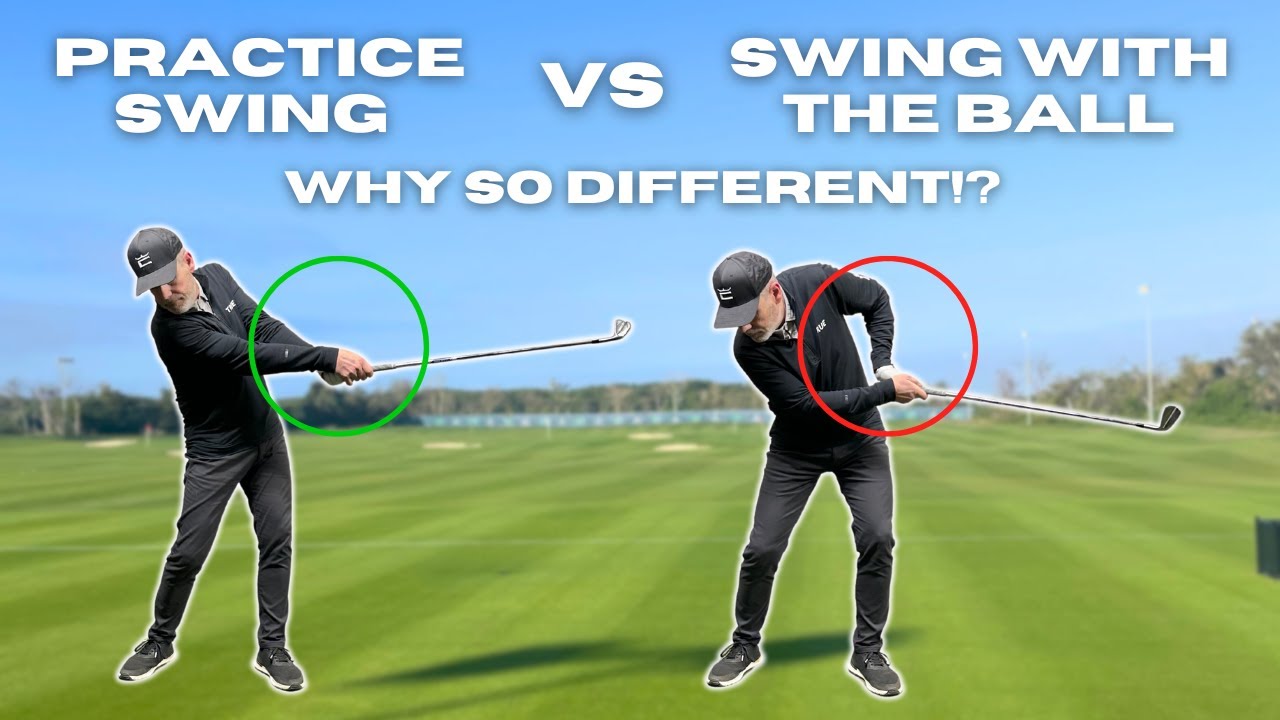
You hear that one all the time; I wish I could put my practice swing on the ball! We explain the huge importance of what to focus on to allow the ball to be perfectly in the way of your practice swing. Enjoy!
- LIKE0
- LEGIT0
- WOW0
- LOL0
- IDHT0
- FLOP0
- OB0
- SHANK2
-
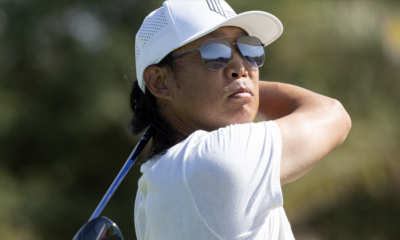
 19th Hole3 weeks ago
19th Hole3 weeks agoTour pro calls Anthony Kim a ‘f*****g idiot’ following Instagram comeback post
-
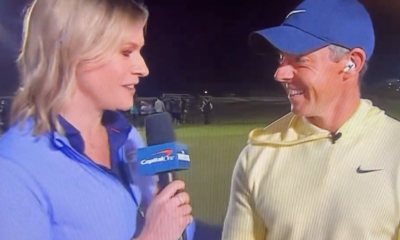
 19th Hole3 weeks ago
19th Hole3 weeks agoThis Rory McIlroy post-round ‘The Match’ moment is going viral…but all is likely not what it seems
-
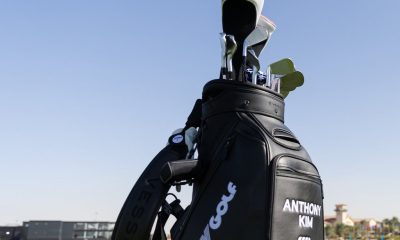
 Whats in the Bag3 weeks ago
Whats in the Bag3 weeks agoAnthony Kim WITB 2024 (February)
-
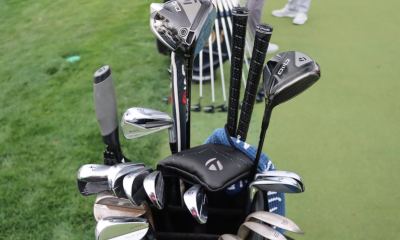
 Whats in the Bag2 weeks ago
Whats in the Bag2 weeks agoScottie Scheffler WITB 2024 (March)
-
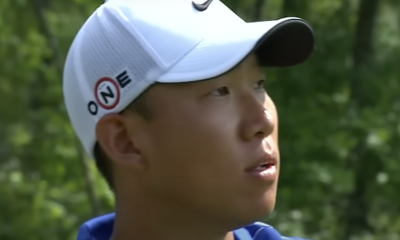
 19th Hole3 weeks ago
19th Hole3 weeks agoAnthony Kim’s speculated LIV Golf sign-on fee may surprise you
-
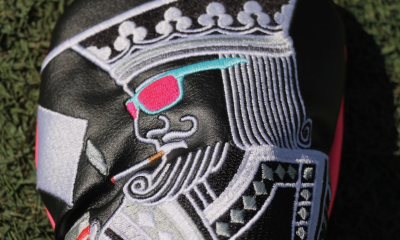
 Tour Photo Galleries2 weeks ago
Tour Photo Galleries2 weeks agoPhotos from the 2024 Arnold Palmer Invitational
-
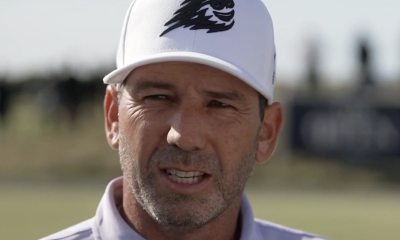
 19th Hole2 weeks ago
19th Hole2 weeks agoThe total sum that Sergio Garcia needs to pay in fines if he wants to return to DP World Tour revealed
-
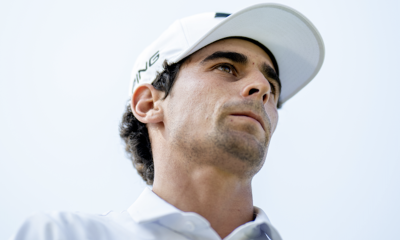
 19th Hole2 weeks ago
19th Hole2 weeks agoJoaquin Niemann names 3 PGA Tour events he’d love to play each year ‘in a perfect world’

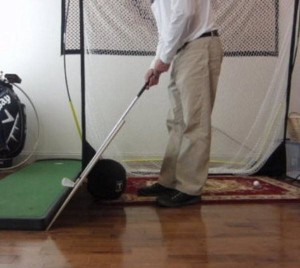
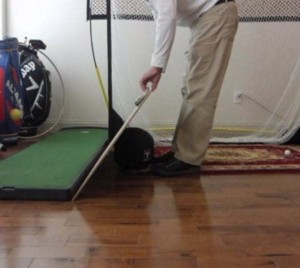
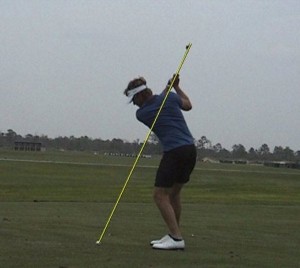
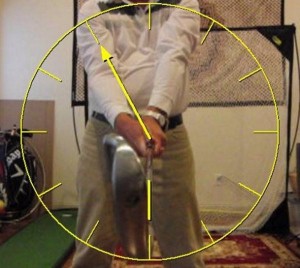
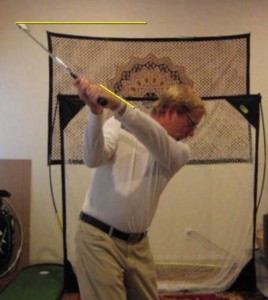
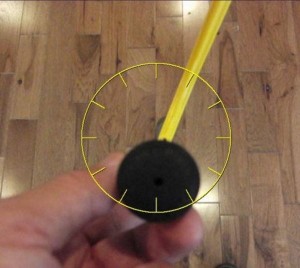
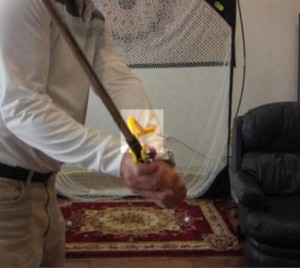
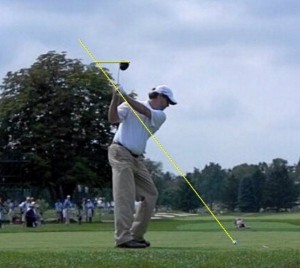
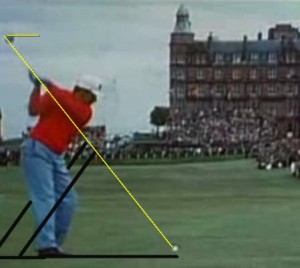
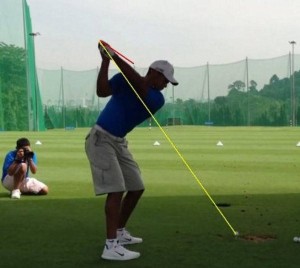








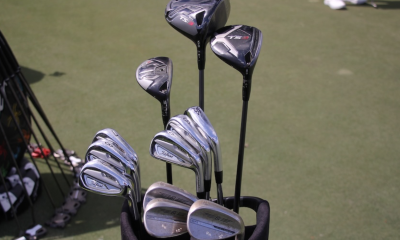

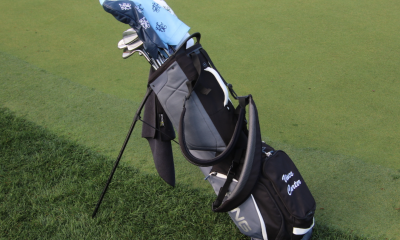

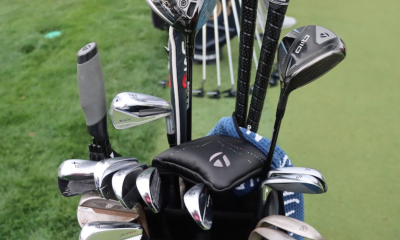

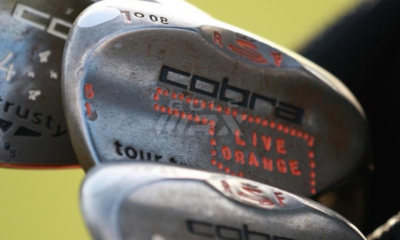

Pingback: How To Hit The Ball Perfectly: The Four Key Aspects Of The Golf Swing – The Annika Academy
Pete
Jul 14, 2016 at 10:38 am
I am glad I found this article to validate my thought process on this. This just feels more natural to me. I had a pro attempt to get me to open up my clubface more on the take away, but I just couldn’t get it back to square no matter how hard I tried. This way, just works best for me, Thank you!
Pingback: The cross over of two major studies | teddykerwin
Karl Simon
Mar 31, 2015 at 4:41 pm
Todd i learned square to square in the 70’s. i wanted to know if you agree with me, counter twist to the top, then rotate forearms back thru to the finish as powerfully possible.
perfect golf swing
Feb 27, 2015 at 2:44 am
Great post. I will be dealing with a few of these issues as well..
toad37
Jul 25, 2014 at 1:04 am
I had this breakthrough at the range today. Thanks for confirming.
Pingback: On The Callaway Golf Natural Golf Palm Grip
Ray Bennett
Nov 9, 2013 at 7:21 pm
What a pleasant surprise to read an instruction article that is spot on the money. Golf being what it is, most golfers will fail to grasp the concept of a square clubface and arm torque in the backswing. My compliments to the author.
paul
Nov 2, 2013 at 10:14 pm
Ha didn’t catch it. usually i catch all the Wrong words and spellin mistacks 😉
jf
Oct 30, 2013 at 6:47 pm
Not sure I even agree with the first sentence. It’s that true when the angle of attack is only zero?
DIRK
Oct 30, 2013 at 4:28 pm
Interesting piece.
FYI: Jarring typo at the end of the first paragraph under “The End-All Slice Fix.” Seems like you want “feel” instead of “free.”
Not trying to be a jerk, just trying to help!
Todd Dugan
Oct 30, 2013 at 8:22 pm
You are correct, Dirk. Should read “FEEL and real are not the same”.